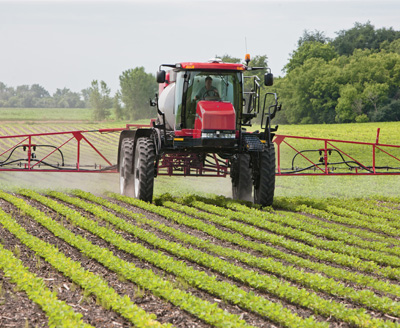
In many areas throughout the Midwest, postemergence soybean applications are starting to take place. With this being only the second season of dicamba-tolerant soybeans getting applications of approved dicamba products, it is a good time to review when and where a buffer is necessary.
First, the buffer should be at least 110 feet if it is required. A more conservative approach can be used, but the 110 feet is a minimum. A buffer is required when there is a sensitive area downwind. A sensitive area is everything but roads, planted agricultural fields containing non-sensitive crops, agricultural field prepped for planting, and areas covered by the footprint of a building, silo, or other man made structure with walls and/or roof. An example of a sensitive area would be a wooded area when the wind is blowing in that direction.
Sensitive crops are different from sensitive areas. Sensitive crops include non-dicamba tolerant soybeans and cotton, cucurbits, tomatoes, etc. When the wind is blowing towards these sensitive crops, we cannot spray. If we want to spray a particular dicamba-tolerant soybean field with dicamba and there are planted sensitive crops near that field, we must wait until the wind is blowing away from the sensitive crop.
Lastly, steward this technology by reading and following the herbicide labels for the approved dicamba products for postemergence use in soybeans. Also make sure that approved tank mixtures are being used by visiting the manufacturers’ website.